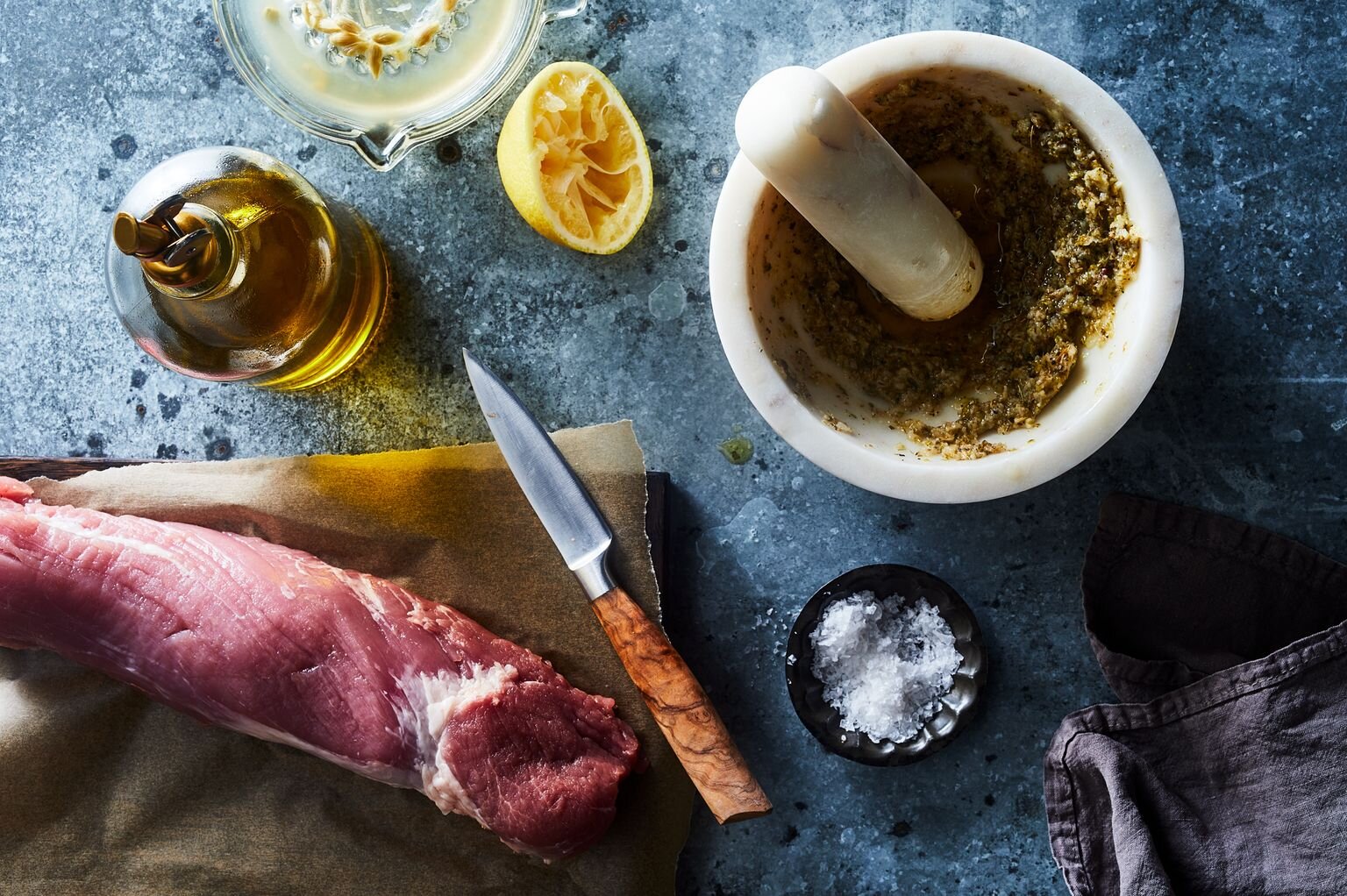Pork Tenderloin Pernil Style
Featured in Food52


Prep Time 30 Min.
Cook Time 30 Min.
Serves 6
Ingredients
Pork Tenderloin Pernil Style
3 pounds pork tenderloin (around 2 to 3 small tenderloins)
Adobo for Pork (below)
Adobo for Pork
For 3 pounds pork tenderloin, scale up or down as needed
3 medium garlic cloves, finely minced 3/8 teaspoon ground
black pepper 1 1/2 teaspoons dried oregano 3 teaspoons
kosher salt 3 teaspoons olive oil 1 1/2 teaspoons fresh lime, lemon, or sour orange juice
Directions
Pork Tenderloin Pernil Style
Cut a series of deep holes throughout the tenderloins with a paring knife and rub it down with the adobo, pushing the seasoning into the holes. Let marinate for 30 minutes on the counter or up to overnight in the refrigerator. (The longer you can wait, the more delicious it will be!)
When you’re ready to roast, heat the oven to 400°F. Line a rimmed baking sheet with foil for easiest cleanup.
Place the tenderloins in the center of the pan, leaving space for air to circulate between each piece, and put the pan on the center rack of the oven. Roast until the internal temperature is 145°F in the thickest part, about 30 minutes, flipping every 10 minutes to evenly brown the outside. (If your pork hasn’t browned by the time it hits 145°F inside, you can give it a quick blast under the broiler for more browning.)
Remove the pan from the oven and set the tenderloin on a carving board to rest for about 10 minutes.
Pour the lemon juice into the baking pan and carefully mix it into the pork juices, scraping up any browned bits with a wooden spoon or spatula. Pour the pan juices into a small bowl and adjust the seasonings to taste.
Cut the pork into 1-inch slices and transfer to a serving dish. (It will taste best and won’t dry out if it’s still slightly pink inside, so if you see that, it’s a good thing!) Serve with the reserved pan juices.
Adobo for Pork (for 3 pounds pork tenderloin, scale up or down as needed)
1. Put all the ingredients in the bowl of a small food processor and blend into a smooth puree, scraping the sides halfway through to incorporate fully. Alternatively, you can use a mortar and pestle or mash the mixture to a paste on a cutting board with the side of a knife.
Adapted from "Coconuts and Collards: Recipes and Stories from Puerto Rico to the Deep South," by Von Diaz (University Press of Florida, 2018).